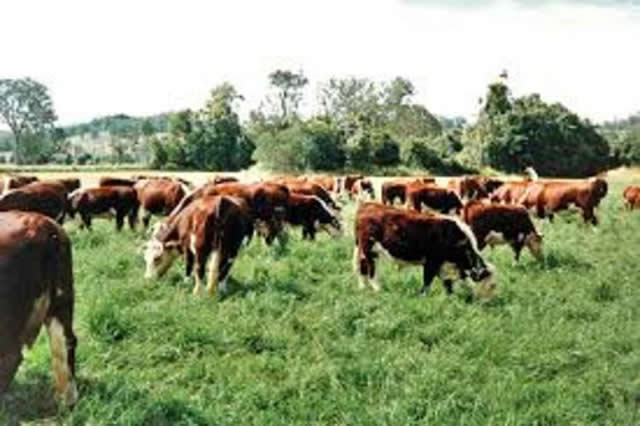
The Rhodesia Herald,
20 January 1970
PASTURE specialists at the Henderson Research Station at Mazoe have developed a new method of grass fertilisation and grazing, which may revolutionise the stock farming system in Rhodesia.
It is expected to help people like tobacco farmers, who with small farms have found themselves having to look for substitutes to replace the livelihood once earned by tobacco.
The new method involves the use of as little land as possible to feed and maintain a high standard of carcass and milk productivity with as many animals as possible.
The senior pasture research officer at the station Mr Rodel, explained the successful experiment.
He said three years ago, 30 sheep had been carried on one acre for just over six months. This had been possible by using a high level of fertiliser, mainly nitrogen, at 240 pound an acre a year.
This proved so successful that it was felt the sheep could be carried year round on these pastures.
Stocking at a lighter rate and conserving all excess grass, this method could carry the animals over the drought periods. Working on a small-scale, three acres of star grass number two, the type best suited to this method, were divided into four camps in order to graze one and rest the other three.
The soil was fertilised at the rate of 240 pounds an acre. The grazing proved sufficient to feed 30 ewes for six months of the summer period and there was also a hay yield from the three acres of 5 000 pounds, which was fed to the animals during winter.
Mr Rodel estimates a 1 000 pound an acre of live weight gain a year, with cattle giving a clear profit of about £29 an acre a year. This is without deducting the cost of other aspects of beef production.
The story is very much the same with sheep. Mr Rodel said this information was being given to farmers all over the country and many were beginning to use the method successfully.
LESSONS FOR TODAY
Government continues to show commitment in improving the agricultural sector through the revival of the national herd in order to get the much-needed foreign currency, through export earnings. According to Deputy Minister of Lands, Agriculture, Water and Rural Resettlement Vangelis Haritatos there will be an assessment at the end of the month: “The assessment . . . also identifies intervention for the livestock sector.”
This 1970 piece demonstrates the importance of research and development in any field, including the agricultural/livestock sectors, for maximum returns. The resurgence of anthrax that is affecting both livestock and humans, in different parts of the country is a reminder of the importance of new thinking in the agri-business industries.
There has been an exponential growth in the livestock sector, despite the cyclical drought spells, which means that more investment should be poured in R&D, including innovative methods of grazing, for optimum productivity in meat, milk and other livestock products.
Established in 1947, the Henderson Research Institute (HRI), (formerly Henderson Research Station) in the Mazowe District “specialises in agri-food research and innovation, responsive and equitable towards achieving Sustainable Development.”
According to information on the Food and Agricultural Organisation website, the HRI is “one of the four research stations in the Department of Research and Specialist Services Division of Livestock and Pastures, which currently carries research targeted at the smallholder farmer.”
For historical information contact:
Zimpapers Knowledge Centre
Herald House on: +263 8677 004323; +263 0242 795771
E-mail: [email protected]
